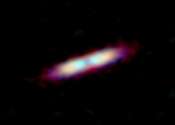The dust and gas in protoplanetary disks
Planets form as the dust grains in a protoplanetary disk grow into pebbles and then finally into planets. Because small dust grains interact with gas (via the drag it imparts), the gas in protoplanetary disks influences the ...









